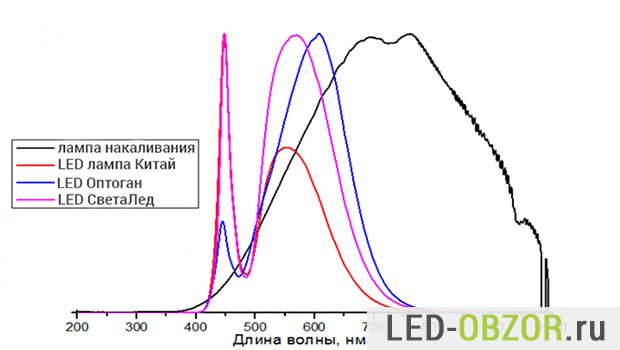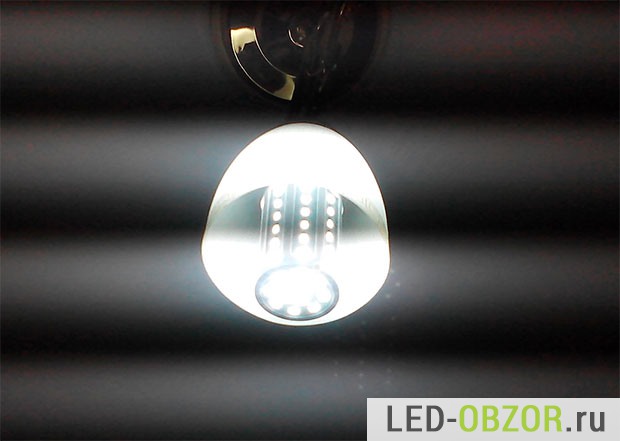Currently, LED lamps are considered the most promising way to implement artificial lighting of premises. They consume little energy and do not contain mercury. Gradually, LEDs are replacing even compact fluorescent lamps. However, some people are wondering how LED lamps affect human vision.
Impact Features
Studies have shown that the main disadvantage of LEDs used in lighting is the high intensity of the wave radiation with a high violet and blue spectrum energy, which harm the visual system. Experiments conducted by Spanish scientists showed that the harm of such exposure can be irreparable. From led lighting damage to the retina of the human eye. It has been scientifically proven that it is the blue color that negatively affects vision. Injuries produced by such radiation are traditionally divided into photothermal, photochemical and photomechanical. The latter create the effect of a shock light wave. Photothermal arise as a result of a local increase in temperature. Photochemical injuries are manifested due to changes in macromolecules in the structure.
An important role in the work of the visual system is played by cells of the retinal pigment epithelium. Their violation is fraught with vision problems. In some cases, blindness may even develop. Under the influence of LED lighting, the number of dead epithelial cells increases, but the growth of new ones is suppressed. Blue light reduces the number of these cells. White and green have high phototoxicity. Red light has no significant effect. But to use lighting during the day, where the red spectrum prevails, is also wrong. More productive work is facilitated by short-wave radiation, which has a blue spectrum. In a person with such lighting, concentration of attention improves. Therefore, it is advisable to use natural lighting systems or lamps in working rooms.
No amount of artificial lighting can replace sunlight. Therefore, it is important for every person to periodically be in bright sunlight on the street. To balance cortisol in the body, you need to walk outside every day in daylight for at least twenty minutes a day for adults, and at least two hours for children.
Lighting classification
There are certain standards that classify light sources according to their phototoxicity, that is, from ultraviolet to infrared radiation. Four groups of risk of impact on human vision are standardly distinguished:
- zero(no risk);
- first group(low risk);
- second(moderate risk);
- third(high risk).
According to this standard, a blue LED having an intensity above 15 W is classified in the third group. If the light intensity is 0.07 W, then the risk is low.
LED lighting used for everyday use is classified as the second (moderate) risk group. Traditional lighting sources, however, belong to the group with low risk or no risk at all.
LEDs and melatonin
Despite the wide range of advantages of LED lamps, most scientists advise avoiding the use of LED lighting, especially before bedtime or just at night. Modern research has revealed a link between exposure to light at night and the occurrence of prostate or breast cancer, heart disease, diabetes, and obesity.
LEDs inhibit the secretion of melatonin, a hormone that influences the night-day cycle. However, lighting is "dangerous" only if it is exposed while the person is in the dark. That is, an important role is played by the duration and intensity of the LED lamps.
Light of any spectrum suppresses the secretion of melatonin, but blue does this to the maximum extent. Therefore, it is advisable to use dim lighting with a red spectrum, do not look at a bright screen two or three hours before bedtime, while working with electronic devices at night, use special glasses that block the blue spectrum. This will help not to disturb the night and day regimen and maintain vision at the same level.
Are there any health risks from LED lamps? This question has been of concern to many people lately, as the enthusiastic hype around them is gradually subsiding and buyers are increasingly starting to think about the composition and dangers of LED lamps. This is complicated by the fact that on the Internet you can find a small number of really useful and well-reasoned articles on this topic. Ultraviolet rays, the effect of lamps on vision and their flickering are the main stumbling blocks in this matter. Is there really UV radiation, what harm does it cause, what does the flickering of lamps mean - we will discuss all this in our article.
In an LED lamp, the light source is the LED. As you know, white LEDs do not exist, and a pleasant white glow is obtained in several ways:
- A phosphor of three colors (green, red, blue) is applied to the surface of an ultraviolet emitting LED, resulting in white light;
- The phosphor of two colors (blue and yellow) is applied to the LED emitting ultraviolet;
- A yellow phosphor is applied to a blue-emitting diode;
- The radiation of crystals of three colors (red, blue, green) is mixed, for which it is used optical system(RGB method).
In the lamps we are used to, white light is obtained by methods using a phosphor. In this regard, many people believe that LED lamps may contain radiation that can harm our eyesight. So is it or not?
The effect of LED lamps on vision
The principle of operation of LED lamps differs from fluorescent lamps, which just produce ultraviolet radiation during operation (during production). fluorescent lamps UV-resistant glass is used). In LED lamps, ultraviolet radiation in the visible spectral range is absent. LEDs emit "normal" light without IR or UV rays.
It is also believed that getting white color using a crystal emitting ultraviolet is an expensive method, which, moreover, has some technological problems. For this reason, white lamps on UV LEDs have not yet reached the industrial scale.
So, for example, in the production of Navigator LED lamps, according to their website, Epistar planar LEDs (made in Taiwan) are used. In the document for these LEDs, you can see that the crystal itself emits blue light with a wavelength of 455-465nm, and white light is obtained due to the yellow phosphor. Also, in order to confirm all the above points, we sent a request to an OSRAM technical consultant and asked how they get the white light of the LED in their lamps. Here is what they told us: “Most modern LED lamps use blue LEDs. A layer of phosphor is applied on top of the blue LED, which allows you to convert cold blue light into white or warm. It turns out that there really is no UV radiation in the lamps that you buy for your home.
Thus, it is not necessary to be afraid of ultraviolet radiation from LED lamps, but still you should not look at the LED point-blank. And of course, LED lamps do not affect the skin (many, by the way, think otherwise) and clothes will not burn out from them. This is important, as this is a question often asked by people who order lamps for a clothing store, or who simply care about it. Clothes can burn out not only from sunlight (which, of course, emits ultraviolet light), but also from poor quality fluorescent and metal halide lamps. But this way it will burn out more slowly than if it was in the open sun. To avoid this, it is worth buying lamps from good manufacturers (preferably LED ones), keeping the distance from the light source to the product, and periodically shifting clothes.
However, in the matter of LED lamps, there is another nuance that should be discussed in more detail. In the course of many scientific experiments, scientists have come to the conclusion that the bright light of the blue spectrum of the LED affects the production of melatonin in our body. Melatonin is a hormone that regulates our daily rhythms, is responsible for the frequency of sleep, etc. That is, thanks to him, we tune in to rest and sleep at the end of the day. A large dose of blue light slows down the production of melatonin, which can worsen well-being, cause insomnia and discomfort.
Researchers V. A. Kaptsov and V. N. Deinego in their article “Light of energy-saving and LED lamps and human health” write that “daily additional exposure of blue color on the eyes young man in adolescence by the age of thirty can cause retinal degeneration.” They especially note Negative influence blue light on the hormonal system in children and adolescents.
Also, according to a study by the French National Agency for Sanitary Food Safety, environment and labor (Anses), the light waves of the blue LED used to produce white color can damage the retina when exposed to light for a long time.
Technological progress is advancing inexorably and I am often asked the same questions about the dangers of LED lamps, and how true the reviews about them read on the Internet are.
As my practice shows, 5 opinions of specialists are many times better than 100 reviews of amateurs who know how to twist and general principle work. Of these 100 reviews from the Internet, only 1-2 are written by a specialist in this topic, the rest are biased and are personal opinions.
Myths about harm
Myth #1. The spectrum is different from an incandescent lamp
 Spectrum by wavelength
Spectrum by wavelength
Yes, the spectrum is different, but that does not make it harmful. Comfortable has long been recognized as fluorescent lighting, which is close to daylight. Pure white light is perceived more comfortably than warm white, because it does not yellow.
Myth #2. Flashing (flickering), and this is harmful
 Flashing example in my hallway
Flashing example in my hallway
Myth #3 - A greenish tint to light
So inexpensive Chinese greens
It is possible to notice such a flaw if you look at something white. For example, a white wall, a sheet of paper, they are with a green tint.
This occurs on inexpensive Chinese-made lamps that use ultra-cheap LEDs from an unknown manufacturer or rejection from the main production. Famous Chinese brands produce European quality LEDs.
Powerful can not be small, it must have a large radiator to remove heat. If not, then low.
My review as an expert
On the topic of harm, I talked with my colleagues, who turned out to be 5 people from different organizations that have long been engaged in light sources. Our opinion almost completely coincided.
You can not praise or be dissatisfied with some manufacturer. Each of them has for sale good models and not much.





